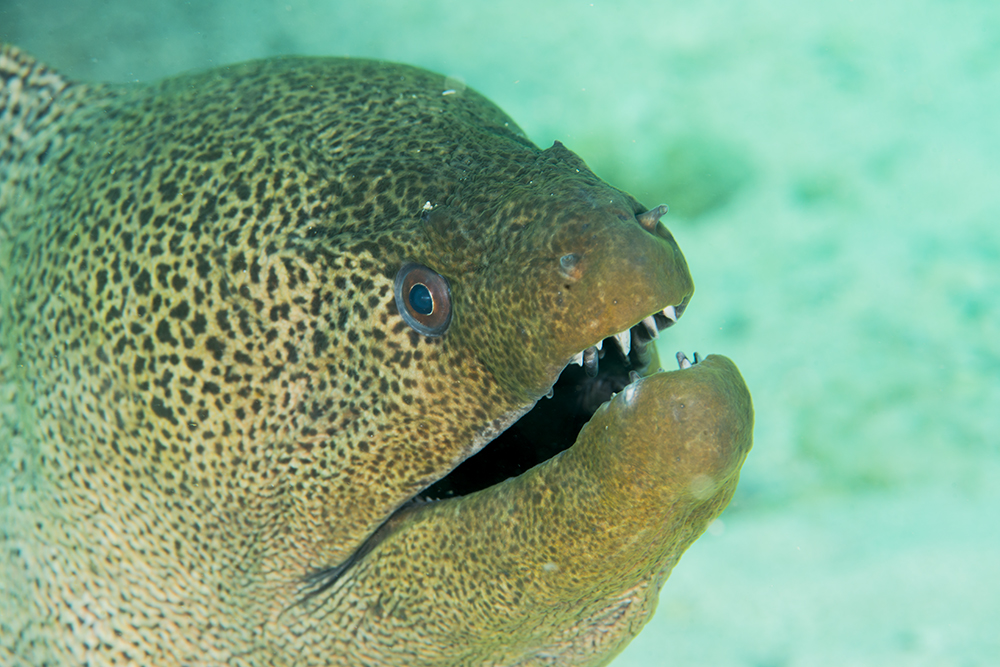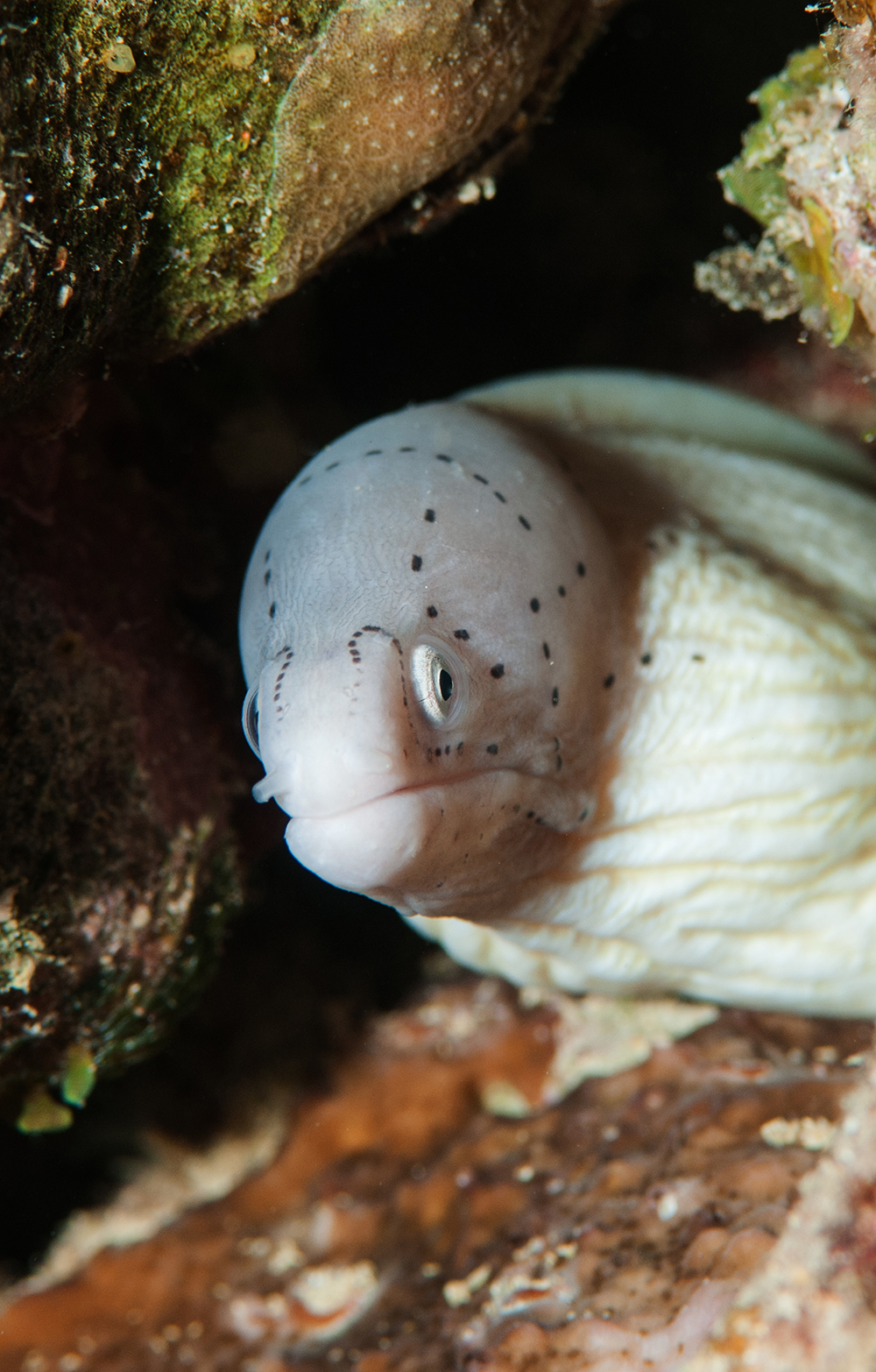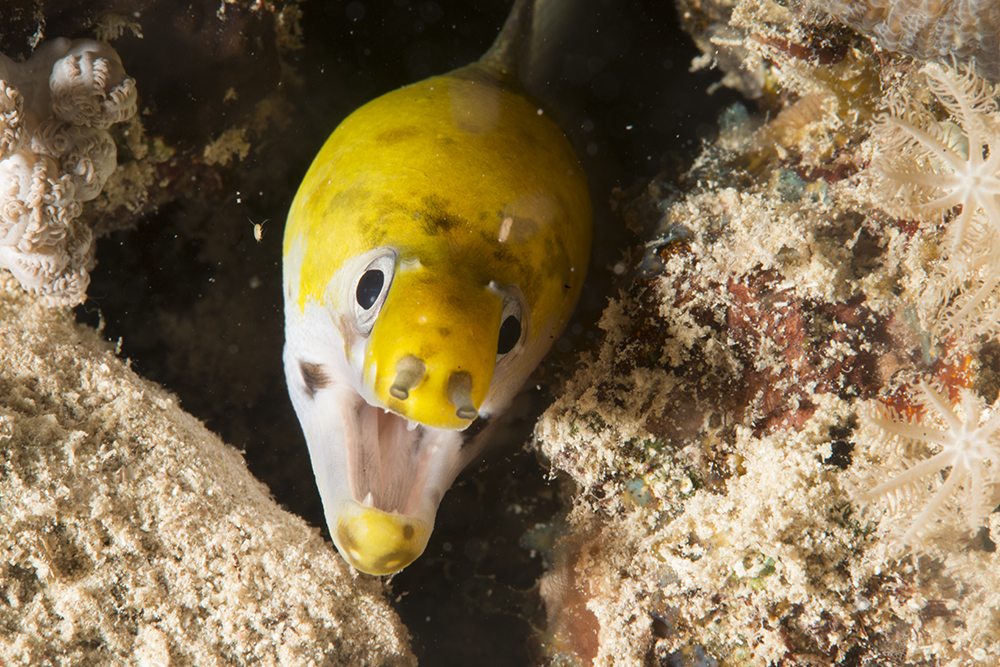Divers communicate with hand signals, most of us have a vocabulary (if you can call it that), of around twenty words that we use to ask basic questions of our buddy and to then answer back. It’s all fairly straightforward and dull most of the time, yet in one time in a million, your life can depend upon communicating clearly. Of lesser import – and much more fun – are the signs we use to indicate the various animals we encounter. Some of these are standard the world over, perhaps the most recognizable is the sign for ‘moray’. This is basically opening and closing your hand like a mouth – as if you’ve lost your sock puppet.
During their novice phase (and sometimes beyond), divers seem fascinated by big morays and guides will scour a reef hoping to find a big one, with impressive dentition. Personally, I’m not that bothered so guides often look at me strangely when I don’t fin over to poke my camera in the face of a large specimen. In fact, sometimes when I’m working I’ll ask them to ignore the big morays. I know some people really like them – the big ones can reach three meters and are impressive right enough – but they just don’t do it for me.
I’m much more interested in the more unusual moray eels and will get very excited over some species. One of my favorites is Gymnothorax griseus. Whilst common enough in its range it is often overlooked as it rests up, peeping out of a hole in the reef. I have watched them from the shore hunting in the shallows, in just a few inches of water and they are quite impressive to watch.
Another widespread but shy species is G. ruepelliae, the Yellow-Head Moray. This is another of the smaller species, again from the Indo-pacific.
I’d better go and find a few more moray pics for another post…













0 Comments